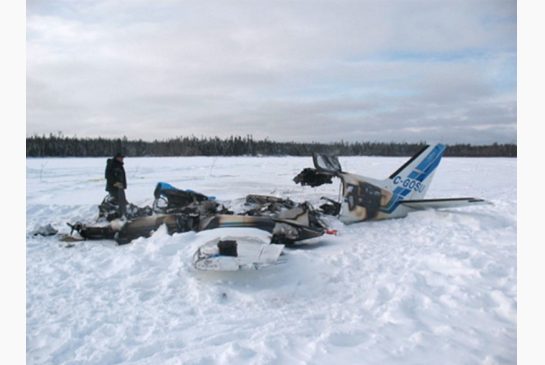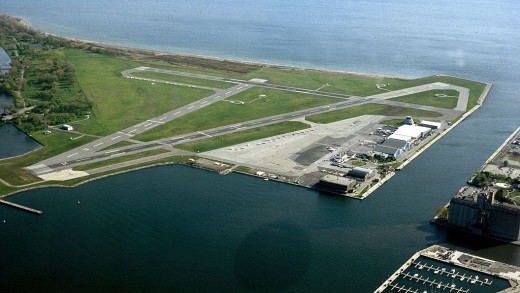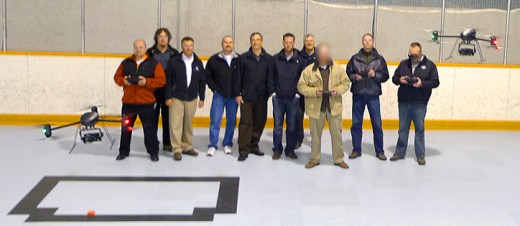 Scroll Down to see all of this week’s updates
Scroll Down to see all of this week’s updates
TSB Launches Air Taxi Probe

The Transportation Safety Board will get to work this year on a major investigation into the operation of Canada’s more than 600 air taxi companies, or “703 operators” as they are commonly called.
In its annual news conference setting priorities for the coming year last November, Board Chair Kathy Fox said there is ample anecdotal evidence suggesting systemic problems with the air taxi industry responsible for a high rate of accidents.
“We want to take a look at this sector of aviation and identify what are the underlining causes to that,” Fox said at the news conference.
Fox cited pilot inexperience, weather and equipment and infrastructure issues that have surfaced “over and over” in accident investigations involving air taxi aircraft, which carry nine passengers or less.
In 2013, air taxis accounted for 18 of 39 commercial aircraft accidents and five of the seven accidents that involved fatalities, according to statistics compiled by the TSB.
Pilots tend to be younger and less experienced as air taxis are often “first jobs” for pilots who want to ultimately work for larger airlines or other careers in aviation. The paradox is that flying conditions are often much more challenging and the aircraft and airports are not as well equipped to deal with them.
The Star also cited comments from unidentified pilots it interviewed suggesting economic and career pressure to fly in marginal conditions.
First Air, FLYHT in Spotlight

First Air earned some world media attention this week after the Toronto Star reported that its fleet of aircraft are equipped with a flight tracking system made by FLYHT, of Calgary.
In the three days after AirAsia Flight 5801 went down before the first wreckage and bodies were found, the disappearance evoked memories of Malaysian Airlines MH370, which has not been found.
The rhetorical questions about how a modern airliner could disappear in an age where cellular phones can be tracked anywhere on earth with a simple app were answered partly by the Star story.
In the absence of regulation, most airlines will not voluntarily spend money on anything that doesn’t either make them more money or save them money. The FLYHT system costs about $120,000 per installation, money First Air apparently considered well spent because of he remote areas it serves in the North.
There is some evidence that the publicity around the two incidents in Southeast Asia may be pressuring other airlines to see the value in being able to track their aircraft but FLYHT CEO Bill Tempany says he hasn’t seen that shift yet.
“The industry itself feels it has no reason to hurry up and do it,” Tempany said about improvements to real-time tracking. “They feel everything is good just the way it is. I personally have a very strong feeling that it’s not fair to the flying public.”
Air Canada Reconsidering City Centre

After fighting tooth and nail for the right to resume service to Billy Bishop Toronto City Centre Airport, Air Canada now says it’s considering leaving.
After a couple of court fights Air Canada Express began service to Billy Bishop, five years after Jazz was evicted by the company that started Porter Airlines.
In a single paragraph in a news release about its December load factors, the airline said it taking a hard look at the Billy Bishop service.
“While Air Canada’s traffic and load factor at Billy Bishop Toronto City Airport increased in 2014 over the previous year, as part of its continuing cost transformation initiatives, Air Canada is assessing the viability of Billy Bishop operations based on current imposed terminal rates and terms,” the airline said in the release.
The company that owns Porter continues to be Air Canada Express’s landlord and Air Canada CEO has openly complained about what he considers to be unfair treatment at the facility and the difficulty the airline has had getting more slots. It now operates 15 flights a day.
The release doesn’t say when Air Canada might make a decision on its future at the airport.
Licences Urged for UAS Pilots

A Winnipeg man who wants to start a “national” pilot school for unmanned aerial systems operators is asking Transport Canada to licence UAS pilots.
Dale George, CEO of Buoyant Aircraft Systems, a company trying to develop commercial airships for use in the North, told the Winnipeg Free Press he plans to approach Transport Canada’s UAV working group with the idea in April.
George told the newspaper he believes it’s time for proper operating standards for UASs and he believes a Transport Canada approved flight school is necessary.
Several Canadian flight schools offer UAS training programs based on the recently released “required knowledge” syllabus published by Transport Canada.
“The skies are not quite filled with them, but they are around, for sure. There’s some confusion around them, still,” George told the Free Press. “I don’t want to say (they are) out of control, but it’s close.”
Transport Canada told the Free Press it hasn’t made up its mind on the issue of licencing.
TC “is studying a number of issues concerning UAV safety. It is expected to submit its recommendations to Transport Canada in the new year,” spokeswoman Andrea Moritz told the newspaper.
There have been suggestions that Transport Canada is considering some type of licencing regime and also aircraft certification but for now it’s concentrating on operational issues as uses are found for the devices.
